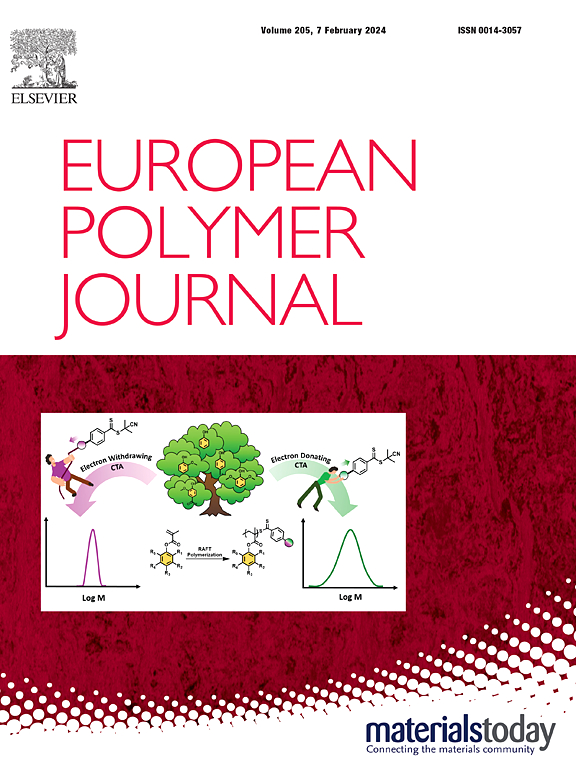ROS-responsive cationic polymer containing ferrocene for gene delivery and enhanced tumor cell apoptosis/ferroptosis
IF 5.8
2区 化学
Q1 POLYMER SCIENCE
引用次数: 0
Abstract
The discovery of advanced materials capable of regulating cell death is crucial for the development of novel anti-cancer therapies. In this study, we designed a reactive oxygen species (ROS)-responsive cationic polymer, PFCA, to deliver the p53 gene, aiming to achieve synergistic apoptosis and ferroptosis by enhancing intracellular ROS and lipid peroxidation (LPO) levels. The polymer was constructed by covalently incorporating cinnamaldehyde (CA)and ferrocene (Fc) into its backbone via an ROS-responsive thioacetal linkage, which could be activated by endogenous ROS to trigger the release of CA. Once released, CA promoted ROS accumulation through GSH depletion, which led to the accelerated degradation of PFCA and sustained production of highly toxic •OH via the Fc-mediated Fenton reaction, thereby establishing an ROS self-amplification loop. Gene transfection assays showed that PFCA could efficiently deliver various types of genes with the transfection efficiency much higher than PEI. Furthermore, PFCA and p53 together downregulated intracellular GSH levels and upregulated ROS levels, resulting in the inactivation of GPX4 and the accumulation of LPO, which further potentiated apoptosis and ferroptosis in HeLa cells. This rationally designed ROS-responsive, self-amplifying polymeric gene delivery system provides an effective strategy for hybrid anticancer therapies and highlights the potential of oxidative stress-amplified modalities for therapeutic applications.

求助全文
约1分钟内获得全文
求助全文
来源期刊

European Polymer Journal
化学-高分子科学
CiteScore
9.90
自引率
10.00%
发文量
691
审稿时长
23 days
期刊介绍:
European Polymer Journal is dedicated to publishing work on fundamental and applied polymer chemistry and macromolecular materials. The journal covers all aspects of polymer synthesis, including polymerization mechanisms and chemical functional transformations, with a focus on novel polymers and the relationships between molecular structure and polymer properties. In addition, we welcome submissions on bio-based or renewable polymers, stimuli-responsive systems and polymer bio-hybrids. European Polymer Journal also publishes research on the biomedical application of polymers, including drug delivery and regenerative medicine. The main scope is covered but not limited to the following core research areas:
Polymer synthesis and functionalization
• Novel synthetic routes for polymerization, functional modification, controlled/living polymerization and precision polymers.
Stimuli-responsive polymers
• Including shape memory and self-healing polymers.
Supramolecular polymers and self-assembly
• Molecular recognition and higher order polymer structures.
Renewable and sustainable polymers
• Bio-based, biodegradable and anti-microbial polymers and polymeric bio-nanocomposites.
Polymers at interfaces and surfaces
• Chemistry and engineering of surfaces with biological relevance, including patterning, antifouling polymers and polymers for membrane applications.
Biomedical applications and nanomedicine
• Polymers for regenerative medicine, drug delivery molecular release and gene therapy
The scope of European Polymer Journal no longer includes Polymer Physics.
 求助内容:
求助内容: 应助结果提醒方式:
应助结果提醒方式:


